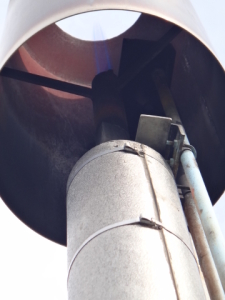Hand sanitizer contains antimicrobial agents like triclosan, which is known to disrupt the bacterial environment in wastewater treatment. Over the past decade we’ve seen an increase in the use of hand sanitizers in domestic and industrial use, especially hospitals (1). Depending on the use in your area, this may disrupt your anaerobic treatment process and methane production. Understanding the accumulation of triclosan in your anaerobic digester will help predict loss of methane or biogas, a growing necessity in today’s sustainability standards.
A recent study at the University of Minnesota (Minneapolis) states that at different concentrations, triclosan will have a negative impact on the plant’s microbial community structure, function, and antimicrobial resistance (2). On all tests studied, variations of 5, 50, and 500 mg/kg of triclosan was added to the bacterial communities. In controlled communities, adding 5 and 50 mg/kg caused the bacteria to initially diverge, then converge back into the structure, but when 50 mg/kg of triclosan was added to communities previously exposed to triclosan, extreme variable gas production resulted. This proposes 50 mg/kg is the tipping point where bacterial communities begin to fail at producing continuous methane (2).
Methane gas is the biggest benefit to wastewater plants with anaerobic digestion. It is used as biogas to fuel electric generators and heating elements. In ideal conditions, the anaerobic digester(s) may provide the plants complete use of electricity and heating. “This research suggests that triclosan could inhibit methane production in anaerobic digesters if concentrations were to increase,” the study says. When adding 500 mg/kg of triclosan, the methane production dropped roughly 50% in methane production (2). For anaerobic digester operators, it is important to monitor the accumulation of triclosan.
As hand sanitizers and antibacterial materials are used more often at homes, industries, and hospitals, the affect on the down stream wastewater treatment plants will be drastic. Not only a stop in methane production, but disorder the bacterial community function as a whole. BOD and TSS will rise and the plants will break environmental compliance. BioGas1 can help balance this improper function by adding necessary trace metals to the methanogenic bacteria to keep them thriving in those certain circumstances
Resources
- David Owen Hands Across America: The Rise of Purell. 2013. The New Yorker. http://www.newyorker.com/magazine/2013/03/04/hands-across-america
- Triclosan exposure causes variable gas production in anaerobic digesters. pg. 15. November 2014. WE&T Water Enorionmental and Technology.


